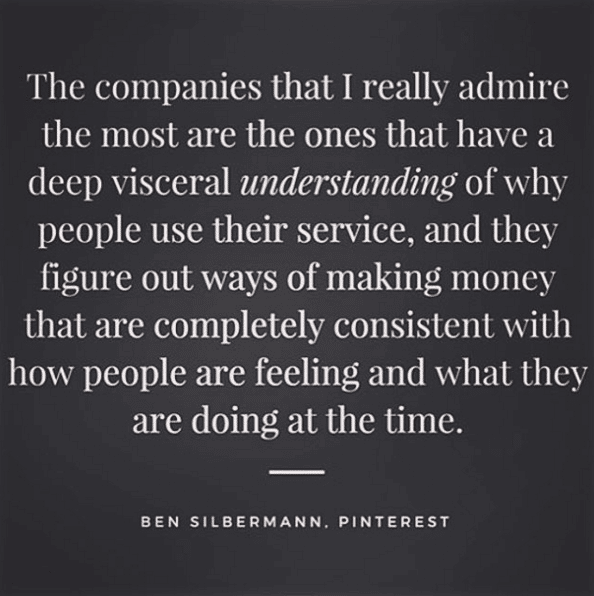Making people fall in love with your product is the ultimate goal for a lot of startups (and brands in general) eagerly pushing for any type of growth.
Working within the tech startup scene for nearly a decade, I’ve seen more fail than succeed. The learnings I walked away with will forever stay with me when it comes to how I choose to run my own company, FastMarkIt.
Failure is a part of success. Behind every successful person there are small events of failure. The keys to surpassing these moments of failure are to respond quickly, keep learning, don’t give up (at least not right away), and know when it’s time to pivot or walk away.
In this blog post, I want to highlight the reasons why startups fail and what you can do to avoid the pitfalls.
Not Understanding Your Target Audience
Identifying your target audience goes beyond just building out buyer personas to market and sell your products to. You have to think like them, deeply ascertain their pain points and what drives them to make decisions – both emotionally and pragmatically. From there, you have to be able to figure out ways of making money that are consistent with how your audience feels and what they’re doing.
Further, take the time to look at the following:
- Market opportunity. What does the total market look like today? Are there studies and data points that support your business model and what you’re looking to do?
- Your addressable market. Be realistic here. Nothing is scarier than being the startup CEO who proclaims that your addressable market is everyone and, thus, you’re going to be the next billion-dollar company in no time!
- Research patterns and trends. Look at both the smaller and larger players in your space and research what their customers are doing (because sooner or later, they’ll be your customers too!). Pinpoint areas you can succeed and where you won’t, so you’ll know where you spend your product, marketing and sales efforts!
Not Making Marketing A Priority
Realize that marketing has changed drastically over the years – no longer is it just a static web page, let alone a function churning out of just having a website or direct postcard. Create an executable marketing strategy and allocate the proper resources to help proliferate your brand and foster growth objectives.
As the CEO, you have to stand behind marketing efforts just as you would with sales and product. (Tip: check out companies like HubSpot, Apple, and Kapost, who have grown their companies by investing time and money into marketing!).
Moreover, I worked at a startup where the CEO constantly made changes without diving into any marketing and user data to help make those decisions. Instead, he’d push for changes because he personally thought they’d help foster growth. This approach transcended to the other departments within the company, which made it more and more difficult for progress further frustrating his employees.
Here are a few amazing things that will happen once you take marketing seriously:
- You focus on the lowest hanging fruit, i.e. your customers. You begin to understand their behaviors (e.g. what makes them stick around, why they identify with your brand, what problem you solve for them, etc.) and find ways to incorporate these findings into your product and sales efforts.
- Your company shifts into a more data-driven way of marketing and selling your product. Sure, gut feelings can get you far when you first start, but if you’re looking to scale your startup, you have to rely on the data points too.
- The fundamentals of laying out clear milestones of how you will gain market share MoM (month over month) or YoY (year over year) become a supplemental marketing piece to the product roadmap and, ultimately, sales objectives.
- You “get” how popular brands today are creating meaningful connections with their target audience through integrated technologies and campaigns. In other words, “content marketing” is no longer just a buzzword you’ve heard from your colleagues.
Not Marketing Your Product Before It’s Ready
An Internet marketer I have followed for years, Lewis Howes, has a great explanation behind marketing a product before it’s ready… Doing so, will enable you to quickly see if there’s an actual need for your product. Here are a few quick tips to get you going:
- Launch an early sign-up landing page.
- Use content marketing to promote and push your product (e.g. webinar, eBook, white paper, guide, etc.).
- Dedicate money to advertising your product alongside your content assets.
- Try testing this out more than once to see if you yield the same, worse or better results. For instance, there are companies who do well the first time around and use that as a way to pave their entire product path. Instead, put in the time to execute multiple variations and tests to see what works best.
- Take the results you incur to better understand your target demographic, so you can add that to your product and marketing roadmap.
Thinking You’re the Only Strong Player
Whether you’re in a saturated or niche market, knowing who the top three to five competitors are will be crucial for your success. Then, knowing exactly what they’re doing well and what they’re failing to do well can be used to your advantage.
I’ve worked at startups where the CEOs think that the competitors are the least of their problems, and then end up failing miserably because they’re not paying attention to what’s happening around them. Of course, you shouldn’t follow your competitors’ every step, but you should know how much market share they have and how they’re taking business away from you. Here are a few questions you need to be able to answer:
- How much are your competitors charging for their products?
- What’s your USP (unique selling point)?
- Why should people buy from you and not your competitors?
- What competitive edge do your competitors have over you?
- What’s it going to take to help you win in this market?
Choosing Profit Over People
Building a small team of passionate believers and then scaling out that team to a medium and large team takes time. You’ll lose people along the way and, if you’re not careful, you’ll lose the good ones – especially if all you care about is money. Only caring about how much revenue your employees can help you gain will also show how little you care about their well-being.
We live in a different world now and it’s time to start doing things differently.
I once worked for a CEO who bragged about the unlimited vacation policy he instituted at his startup because people were actually taking less time off. He took pride in the fact that his employees hardly took any time off. What he didn’t realize is that this policy is known more as the “nobody takes vacation policy.” There are few startups who have made a conscious effort to steer away from the cliché values promoted within their job postings and websites – you know you’re guilty of saying how awesome it is to offer free food, the promise of equity that’ll turn people into millionaires overnight, free booze, foosball and ping pong tables.
Per a recent FastCompany article, here are a few companies who are rethinking their perks and doing them differently than most:
- Ted Livingston, CEO at Kik – Every four months, Kik makes employees take at least one week off and its offices close for two weeks around the holidays. “This is a marathon, not a sprint,” explains Livingston, “and we feel that people will be much more productive if they’re well rested.”
- Phil Libin, CoFounder at Evernote gives employees $1,000 in spending money if they took a vacation lasting at least a week.
- Bart Lorang, CEO at FullContact instituted a paid vacation policy, giving employees $7,500 to go on vacation and not check their work the entire time.
More importantly, research shows that beyond ~40-50 hours per week for work results in marginal returns due to burn out, an increase in negativity and a decrease in productivity.
As Tony Hsieh once said, “People don’t leave companies, they leave people.” So, just as you would want to work hard at delivering amazing experiences to your customers, treat your employees the same. They’re the reason why your customers will grow to love your brand and also the lifeline to helping you scale your startup.






